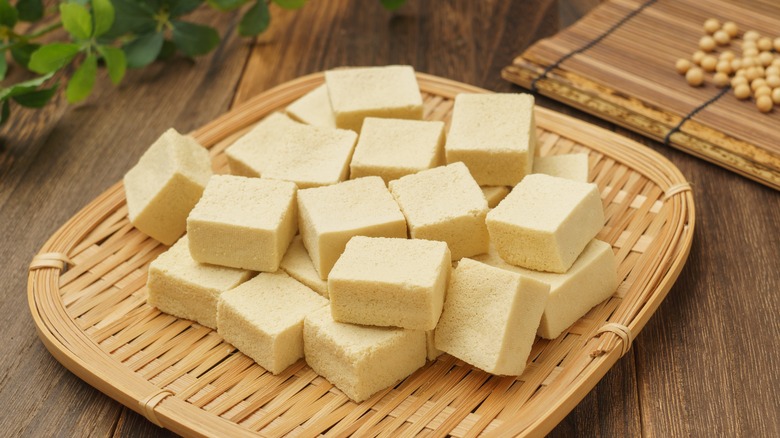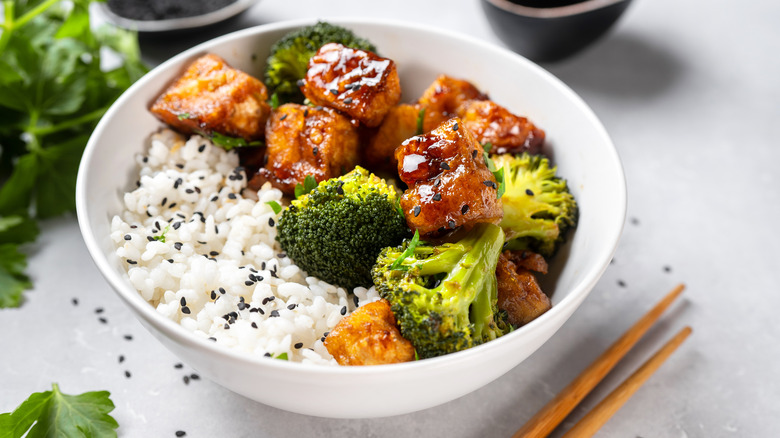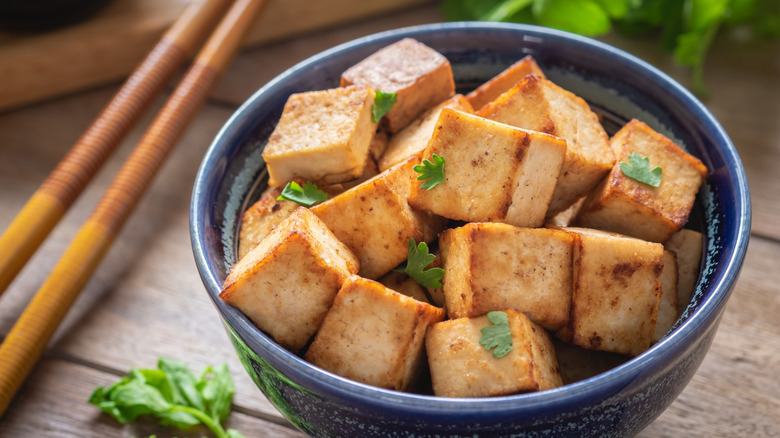Why You Should Be Freezing Your Tofu Twice
Tofu is one of the most versatile ingredients in anyone's kitchen. It's packed with protein, fits into many cuisines, and is vegan and gluten-free to boot. However, if you want to get the most out of your tofu, a simple method involves freezing it twice before cooking.
In this video from Food Network's official Instagram account, you can see how this process creates pleasantly chewy textures and holes throughout the tofu's body. This occurs when ice forms inside the tofu; as it melts, the holes remain. Repeating the process doubles these fissures, making it even more effective for the tofu to soak up flavors better than its unfrozen counterpart, as all those little pores trap sauce, and the newly dried surface absorbs it like a sponge. Your tofu will also be drier after this process, meaning its flavor will be more concentrated.
Be sure to remove the tofu from its packaging before freezing. One of your goals is to reduce its water content, so freezing it while it's still encased in water is counterproductive. That said, you don't need to worry about pressing the water out of the tofu until after the second freezing process. Finally, ensure your tofu is completely defrosted before freezing it again.
What kind of tofu to use
Tofu is typically available in silken, soft, medium-firm, and firm varieties. Silken tofu should never be frozen, as this process will ruin its custardy texture, defeating the purpose of using this particular product. While soft tofu can be frozen, it doesn't become as spongy and dense as its firmer counterparts. For optimal results, choose medium-firm or firm tofu, as they contain less water than the softer varieties, facilitating easier water removal through freezing.
This freezing technique is most effective in dishes where tofu needs to be relatively solid and meaty — for example, twice-frozen tofu would be perfect in mock-chicken recipes. It also excels in dishes like crispy pan-fried tofu, or vegetarian dishes such as lemongrass tofu with Asian greens.
However, avoid this method if you're aiming to preserve the smooth, soft texture of tofu. In dishes like mapo tofu, where you desire soft and silky protein that melts in your mouth, a craggier texture is not ideal.
More tips to get the most out of your tofu
After you remove your tofu from the freezer for the last time, place it between two clean kitchen towels and gently press out any remaining moisture. Removing this water helps it crisp up faster during cooking, as there is less liquid to evaporate. It also means the porous tofu will absorb other flavors more effectively. Since tofu has a mild taste on its own, be sure to season it well. You can marinate it before cooking, or toss it with a tasty sauce afterwards.
Try frying or searing your tofu to create a textural contrast. The exterior will become beautifully crispy, forming a crunchy layer enriched with rich, browned flavors. You can also coat the tofu by battering it with cornstarch, flour, or any other ingredient of your choice. Both methods are effective for cut-up pieces of tofu and larger blocks used for tofu steaks.



